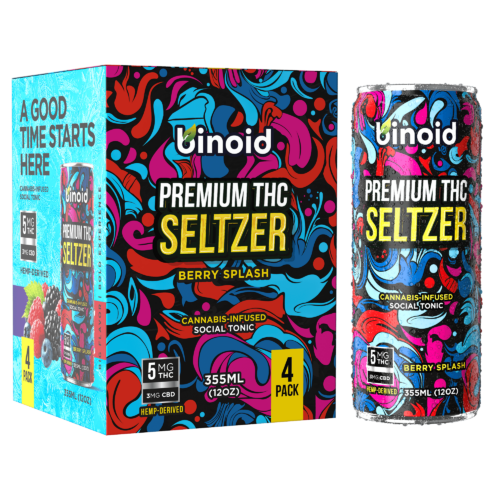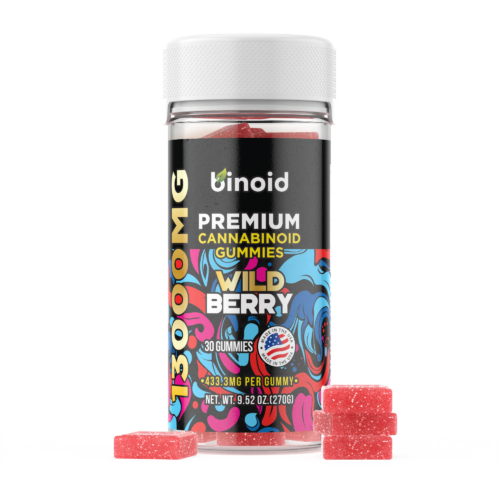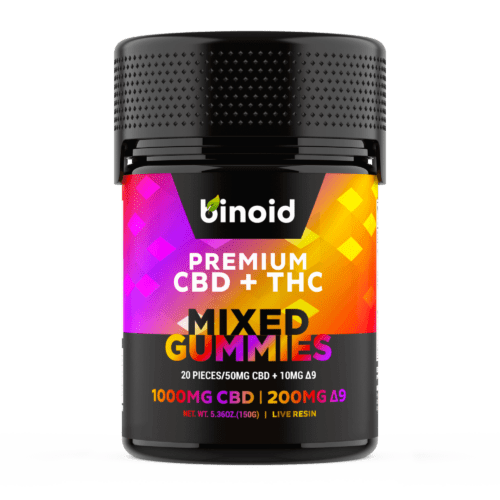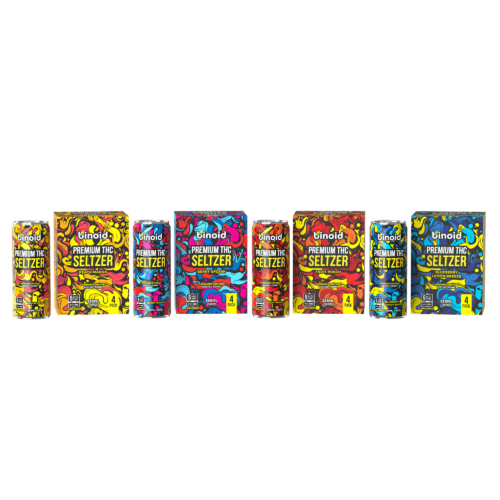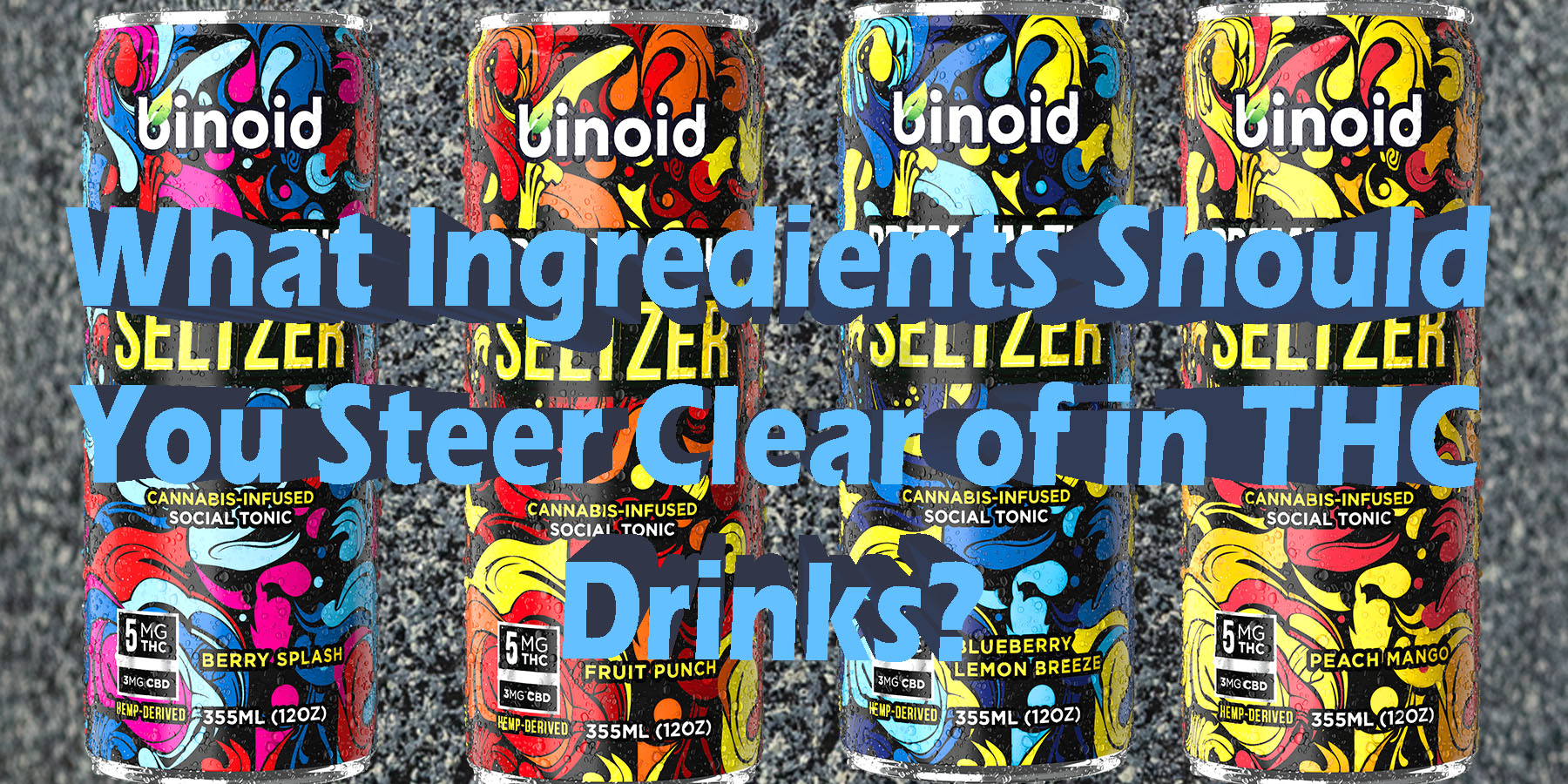
What Ingredients Are Bad In THC Drinks?
In our modern quest for wellness and curated experiences, we have become more inquisitive than ever about what we put into our bodies. We meticulously scan the labels on our food, question the source of our supplements, and demand transparency from the brands we support. As the world of cannabis-infused beverages continues to blossom with exciting and innovative new options, it is only natural that this same discerning eye turns to the liquids we choose for our moments of bliss and relaxation.
The journey to a chilled-out state of mind should be a clean one, yet not all drinks are created equal. Beyond the promises of euphoria and calm lies a simple list of ingredients, a blueprint of the beverage’s true character. Learning to read and understand this list is an act of empowerment, transforming you from a passive consumer into a conscious connoisseur of your own well-being.
To Buy THC Drinks Click Here
Recommended products
What are THC Drinks?
Before we peel back the label to inspect the contents, it’s important to have a clear understanding of the beverages themselves. At its core, a THC drink is a ready-to-consume beverage that has been infused with a precise, measured dose of Tetrahydrocannabinol (THC) – the most well-known compound in the cannabis plant and is primarily responsible for the feelings of bliss and the shift in perception many people associate with its use. These drinks are crafted to be approachable and convenient, presenting the effects of cannabis in a familiar format. The true innovation lies in the science that allows the naturally oil-based THC to blend perfectly with water-based liquids, creating a consistent, shelf-stable, and enjoyable product. Not to mention, a discreet and straightforward way to partake.
The current market for THC drinks is a vibrant landscape of diverse options, with each category defined by its base ingredients, production methods, and typical flavor profile. The creation of these beverages hinges on the science of emulsification, a process that takes a refined cannabis extract and makes it completely dispersible in liquid, opening up a world of culinary possibilities for producers and consumers alike. Hence, the types of THC drinks you’ll encounter are:
THC Seltzers: This category is defined by its simplicity and minimalist ingredient profile, appealing to health-conscious consumers. The foundation of a THC seltzer is purified, carbonated water. The production process involves infusing this water with a nano-emulsified THC distillate, which ensures a clear appearance and rapid mixing. The subtle taste is derived not from sugar, but from natural fruit essences or extracts, like lime, grapefruit, or raspberry. They are almost universally packaged in slim 12-ounce aluminum cans, a choice that is both recyclable and effective at protecting the cannabinoids from light, which can cause degradation over time.
THC Sodas: These beverages are designed to replicate the indulgent and sweet experience of traditional carbonated soft drinks. The manufacturing process begins with a syrup base composed of water, a significant amount of a sweetener, and a proprietary flavor blend, such as cola or root beer. A pre-measured dose of THC extract is then infused into this base before it is carbonated and packaged. Given their composition, consumers should pay close attention to the type of sweetener used, as it is a defining ingredient. Packaging often uses retro-style branding on standard aluminum cans or classic glass bottles to evoke a sense of nostalgia.
THC Waters: THC-infused waters are crafted for the purist, with a focus on clean hydration and a straightforward delivery of THC. Their ingredient list is typically the shortest of any category, consisting of just purified, distilled, or mineral-rich spring water and a tasteless, colorless, water-soluble THC isolate or distillate. Most varieties contain no sugar, calories, or additional flavors, although some may feature a very delicate hint of a natural fruit essence. The packaging is often designed to look clean and minimalist, utilizing clear or lightly tinted PET plastic bottles or sleek glass bottles, much like premium bottled waters.
THC Lemonade: This is a classic non-carbonated beverage created from a base of lemon juice, water, and a sweetening agent. The production involves creating large batches of lemonade, where the balance of tartness and sweetness is carefully controlled. A THC emulsion is then blended into the batch to ensure even distribution of the active ingredient. The type of sweetener used is a key variable in these drinks, ranging from traditional sugar to natural alternatives. THC lemonades are packaged in various formats, including single-serving cans and glass bottles, as well as larger, multi-serving resealable jugs.
THC Tea: This category includes both ready-to-drink (RTD) iced teas and traditional tea bags for home brewing. For RTD versions, large quantities of black, green, or herbal tea are brewed using real tea leaves, which are then cooled and often sweetened. A THC extract is then emulsified and mixed into the tea before packaging in bottles or cans. For infusible tea bags, a powdered, water-soluble THC is precisely mixed with the dry tea leaves and other herbs before being portioned into individual bags and packaged in a standard cardboard tea box. The ingredients often include the tea itself, a sweetener, and sometimes citric acid for preservation.
THC Coffee: There are two primary production methods for THC coffee. The first involves infusing whole roasted coffee beans with a THC distillate oil; the porous beans absorb the oil, and the THC is extracted during the home-brewing process. The second method, used for ready-to-drink products, involves brewing a large batch of coffee as a cold brew, into which a liquid THC emulsion is blended before it is canned or bottled. Besides coffee and THC, these drinks may contain milk, sugar, or other flavorings, making the full ingredient list important to review. Packaging includes airtight bags for coffee beans or cans and bottles for cold brew.
THC Cocktails: These are sophisticated, non-alcoholic beverages designed to mimic the complex taste profiles of traditional cocktails. Their creation is an exercise in mixology, involving the careful layering of flavors from natural fruit juices, botanical extracts, bitters, and spices to replicate drinks like a margarita or a Moscow mule. A THC emulsion is then infused into this complex, non-alcoholic base. The ingredient list can be long, reflecting the complexity of the flavor profile, and often includes various natural and sometimes artificial flavorings. Packaging is typically in smaller, single-serving cans or decorative glass bottles to reflect their premium positioning.
THC-infused Wines and Beers: The creation of these non-alcoholic products is a highly technical process. It begins with the full production of a traditional wine or beer. This is followed by a dealcoholization step, where the alcohol is gently removed using methods like vacuum distillation or reverse osmosis, aiming to preserve the original flavor. Finally, a precise dose of a water-soluble THC emulsion is infused into this non-alcoholic base. The ingredient list will be similar to that of their alcoholic counterparts, minus the alcohol. Packaging is designed to be almost identical to standard beer cans, beer bottles, or wine bottles.
THC Drink Mix: This product category is all about convenience and consists of a dehydrated powder or a liquid concentrate. To create the powder, a THC nano-emulsion is bonded to a carrier powder, like a type of maltodextrin, and then spray-dried into a fine, soluble substance. This is then mixed with sweeteners, flavors, and anti-caking agents. Liquid concentrates are essentially shelf-stable, concentrated THC emulsions with added flavors and preservatives. The ingredient list for these mixes can be extensive, making them a key category for label-conscious consumers to scrutinize. Packaging is usually single-serving sachets or small, multi-serving dropper bottles.
The general effects of a THC drink are largely defined by their onset and duration, which can differ notably from other methods of consumption. Thanks to the use of Nanoemulsion technology in many beverages, the THC can be absorbed by the body much more quickly than from a traditional edible. This can lead to an onset of effects in as little as 10 to 20 minutes. This rapid feedback is a crucial feature, as it allows a user to better assess the effects in real-time and manage their experience. The duration of the effects is also often shorter than that of edibles, making for a more manageable journey that doesn’t necessarily consume an entire day, a characteristic that appeals to many users.
The audience for THC drinks is remarkably diverse and continues to grow as the perception of cannabis evolves. A major segment of this audience includes individuals seeking alternatives to alcohol. They are drawn to the ability to participate in social rituals with a beverage that provides a pleasant buzz, but without the well-known downsides of alcohol. Another significant group is composed of wellness-minded consumers who value the smoke-free nature of the product and actively seek out options that are low in sugar and calories and made with all-natural ingredients. This also includes “canna-curious” newcomers, who find the familiar and controlled format of a beverage to be a much more approachable entry point into the world of cannabis than other, more traditional methods.
Recommended products
Why Ingredients are Chosen (or Not) in THC Drinks?
Navigating the world of THC drinks with a health-conscious mindset means becoming a savvy reader of ingredient labels. While the front of the can or bottle might promise a clean and blissful experience, the back of the can tells the real story. The quality of a beverage is not just determined by the THC it contains, but by the quality of everything else that goes into the formulation.
You see, Ingredients in THC drinks are carefully selected to ensure product stability, consistent dosing, and an enjoyable consumer experience. Water-soluble cannabinoids are essential because they allow the THC to evenly disperse in the liquid, ensuring a predictable effect and preventing separation. Natural and artificial flavorings and sweeteners are incorporated to mask the often bitter taste of cannabis extracts, making the drink palatable. Conversely, ingredients like non-emulsified oils are avoided as they lead to inconsistent dosing and an unpleasant texture. Similarly, heavy metals or contaminants are strictly excluded through rigorous testing to ensure consumer safety and product purity. The overall aim is to create a safe, stable, and appealing alternative to traditional cannabis consumption methods.
A List of Ingredients to Steer Clear of in THC Drinks
Many mass-produced beverages can contain artificial additives, excessive sugars, and chemical preservatives that discerning consumers may prefer to avoid. Being able to identify these less-desirable ingredients allows you to make choices that align with your personal wellness goals, ensuring the path to relaxation isn’t paved with unnecessary artificial compounds. The following chart details some of the common ingredients you might want to steer clear of when selecting your next THC drink.
|
Ingredient to Avoid |
Why You Might Steer Clear of It |
Commonly Found In |
|
High-Fructose Corn Syrup (HFCS) |
A highly processed, artificial sweetener derived from corn starch. Many health-conscious consumers choose to avoid HFCS due to its high fructose content and its association with a variety of negative health markers in mainstream food and beverage studies. It is often seen as a marker of a lower-quality, mass-produced product. |
THC Sodas, some THC Lemonades and Iced Teas |
|
Artificial Sweeteners (Aspartame, Sucralose, Acesulfame Potassium) |
These are zero-calorie, synthetic sugar substitutes. While approved for consumption, some individuals report adverse reactions like headaches or digestive discomfort. There is ongoing consumer debate about their long-term health effects, leading many people to prefer sweeteners derived from natural sources. |
“Zero Sugar” or “Diet” THC Sodas, some Drink Mixes and THC Waters |
|
Artificial Colors (e.g., Red 40, Yellow 5, Blue 1) |
These dyes are petroleum-derived synthetic additives used to give beverages a vibrant, consistent color. They serve no nutritional purpose and are purely cosmetic. Some studies have linked certain artificial colors to adverse reactions in sensitive individuals, leading many consumers to seek out products colored naturally with fruit and vegetable extracts. |
THC Sodas, brightly colored THC Cocktails, some Drink Mixes |
|
Artificial Flavors |
These are chemically derived flavorings designed to mimic natural tastes. The term “artificial flavors” on a label can refer to a proprietary blend of many different chemicals. Consumers prioritizing natural, whole-food-based diets often choose to avoid these in favor of products flavored with real fruit juices, purees, or natural extracts for a more authentic and cleaner taste. |
THC Sodas, some THC Cocktails, Drink Mixes, some lower-quality Seltzers |
|
Chemical Preservatives (e.g., Sodium Benzoate, Potassium Sorbate) |
These are chemicals added to beverages to prolong shelf life by preventing the growth of mold, yeast, and bacteria. When combined with other ingredients like ascorbic acid (Vitamin C), sodium benzoate can form benzene, a known carcinogen, although levels in drinks are typically very low. Many people prefer products with no preservatives or those that use natural alternatives like citric acid. |
Shelf-stable THC Sodas, Lemonades, Iced Teas, and some Cocktails |
|
Brominated Vegetable Oil (BVO) |
An emulsifier and clouding agent, BVO is used to keep citrus flavors from separating in beverages. It contains bromine, an element also found in flame retardants. While used in small amounts, its use is banned in food products in Europe and Japan, which is a significant red flag for many health-conscious consumers in the United States who prefer to avoid it as a precautionary measure. |
Some citrus-flavored THC Sodas |
|
Propylene Glycol |
A synthetic liquid substance that is often used as a solvent or carrier for flavors and extracts in food and beverage production. While the FDA considers it “generally recognized as safe” (GRAS), it is also an ingredient in antifreeze, a fact that makes many consumers uncomfortable. Discerning buyers often look for products that use more natural, plant-based carriers for their flavorings and emulsions. |
Some THC Drink Mixes and flavored THC Waters |
Recommended products
A List of Good Ingredients Found in THC Drinks
On the other side of the coin, the rise of the wellness-conscious consumer has pushed many innovative brands to craft their THC drinks with high-quality, natural, and even beneficial ingredients. Reading a label can also be a delightful experience when you discover thoughtful additions that signal a premium, well-crafted product. These are the ingredients that not only contribute to a delicious taste but also align with a healthier and more mindful lifestyle. Looking for these components can help guide you toward beverages that are designed with your well-being in mind, from the sweeteners used to the sources of flavor and color. The presence of these ingredients often reflects a brand’s overall commitment to quality and transparency. The following chart details some of the common high-quality ingredients you might be happy to find in your next THC drink.
|
Good Ingredient to Find |
Why It’s a Good Sign |
Commonly Found In |
|
Natural Sweeteners (Stevia, Monk Fruit, Agave Nectar, Allulose) |
These are sweeteners derived from plants or natural sources rather than being synthesized in a lab. Stevia and monk fruit are popular for being zero-calorie, while agave nectar and allulose are valued for their lower glycemic index compared to regular sugar. Their presence signals a brand’s effort to create a better-for-you product. |
Premium THC Seltzers, THC Waters, “healthier” THC Sodas and Lemonades |
|
Real Fruit Juices and Purees |
Using actual fruit juice or puree for flavor and color is a clear sign of a high-quality product. This provides a more authentic and complex taste profile compared to artificial flavorings and adds natural color and sweetness. Seeing “apple juice concentrate” or “raspberry puree” on an ingredient list is generally preferable to seeing “artificial flavors” and “Red 40”. |
High-quality THC Seltzers, Sodas, Lemonades, and Cocktails |
|
Natural Flavors/Essences |
Derived from actual plant materials, “natural flavors” or “essences” are a significant step up from their artificial counterparts. These are created by extracting the flavor compounds from real fruits, vegetables, spices, or herbs. While the term can still be broad, it indicates that the flavor originates from a natural source, which is a priority for many consumers. |
Most high-quality THC Seltzers, Waters, Teas, and Cocktails |
|
Natural Colors (from Fruit/Vegetable Extracts) |
Many brands now use extracts from fruits and vegetables to color their beverages naturally. For example, beet juice extract might be used for a red or pink hue, and beta-carotene from carrots or annatto can provide yellow and orange shades. This is a clean, chemical-free way to make a drink visually appealing without resorting to synthetic, petroleum-based dyes. |
Premium THC Sodas, Lemonades, and Cocktails |
|
Adaptogens and Nootropics (e.g., L-Theanine, Ginseng, Ashwagandha) |
Some forward-thinking brands are creating “functional” beverages by adding adaptogens or nootropics. For example, L-Theanine (an amino acid found in green tea) is often included for its potential to promote a state of calm focus. While these are not health claims, their inclusion shows a brand is focused on creating a targeted, synergistic experience. |
Functional THC Teas, Seltzers, and specialty Health Drinks |
|
Botanical Extracts (e.g., Ginger, Chamomile, Mint, Lavender) |
The use of real botanical extracts adds both flavor and a sense of artisanal craftsmanship to a beverage. Ginger can provide a spicy kick, chamomile and lavender can lend soothing floral notes, and mint can add a refreshing coolness. These ingredients are often associated with traditional wellness practices and signal a thoughtful, sophisticated formulation. |
THC Teas, premium THC Cocktails, and specialty Seltzers |
|
Natural Preservatives (e.g., Citric Acid, Rosemary Extract) |
While many premium drinks have no preservatives at all, some that require shelf stability may use natural alternatives to chemical options. Citric acid, derived from citrus fruits, is a common choice that can adjust acidity and act as a mild preservative. This demonstrates a brand’s effort to keep its product clean and stable without resorting to ingredients like sodium benzoate. |
Shelf-stable THC Teas, Lemonades, and Sodas |
Bottom Line: There are Bad and Good Ingredients to Be Mindful of in THC Drinks
In the vibrant and expanding market of THC-infused beverages, the ultimate power rests in the hands of the consumer, wielded through the simple act of turning over the can and reading the label. The journey toward your desired feeling of bliss or relaxation should be as clean and direct as possible, and that path is paved with high-quality, recognizable ingredients.
Choosing a beverage becomes more than a preference for flavor; it becomes a statement of personal standards. By learning to identify and steer clear of undesirable additives while seeking out the green flags of natural, thoughtful formulation, you elevate yourself from a simple customer to a conscious participant in your own well-being. This mindful approach ensures that the experience in every sip is one you can feel good about, both inside and out.

